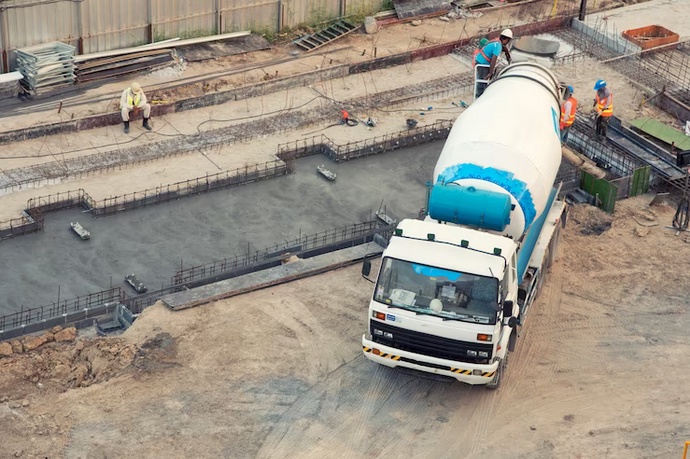Concrete pumping technology has revolutionized the construction industry, offering a range of benefits that enhance efficiency, safety, and productivity. In this exploration, we delve into the world of concrete pumping, highlighting the various ways in which it maximizes efficiency on construction sites and contributes to more sustainable and cost-effective building processes.
The Evolution of Concrete Pumping Technology
Concrete pumping is a process that allows the efficient transport of freshly mixed concrete from the batching plant to the construction site, ensuring precise placement in various structures. This technology has undergone significant advancements over the years, evolving from manual labor-intensive methods to highly sophisticated equipment and machinery.
Early on, construction workers relied on wheelbarrows, buckets, and manual labor to transport concrete to the desired location. While effective for small projects, these methods were not suitable for larger, more complex construction endeavors. The introduction of the concrete pump, equipped with a series of pipes and hoses, revolutionized the industry, making it possible to reach higher, farther, and faster with increased precision.
Maximizing Efficiency Through Concrete Pumping
Concrete pumping offers numerous advantages that contribute to efficiency in construction processes. Here are some key ways in which this technology enhances efficiency:
1. Faster Placement
Concrete pumping significantly accelerates the placement of concrete. Traditional methods involving manual transport are laborious and time-consuming, particularly for high-rise buildings or large projects. With concrete pumps, concrete can be delivered quickly and precisely, minimizing delays and expediting construction schedules.
2. Improved Precision
Precision is paramount in construction, especially in structural elements like columns, walls, and beams. Concrete pumps offer precise placement and can reach inaccessible or confined spaces. This level of accuracy reduces the need for corrections and adjustments, saving both time and resources.
3. Reduced Labor Requirements
Manual concrete placement typically requires a substantial labor force to transport, pour, and finish the concrete. Concrete pumping minimizes the labor required for these tasks. This reduction in labor not only lowers costs but also enhances worker safety.
4. Cost Efficiency
By speeding up construction schedules, reducing labor requirements, and minimizing wastage, concrete pumping ultimately results in cost savings. Project managers and builders can allocate resources more efficiently and reduce overall expenses.
5. Minimized Concrete Wastage
Concrete pumping reduces the risk of concrete spillage and wastage during transportation. Traditional methods involving wheelbarrows or buckets are more prone to accidents and spillage, which not only wastes materials but also creates a mess on the construction site. Concrete pumping technology ensures that most of the concrete reaches its intended destination, minimizing wastage.
6. Enhanced Safety
Safety is a top priority in construction. Concrete pumping technology improves safety by reducing the physical strain on workers, minimizing the risk of accidents, and preventing back injuries associated with manual concrete transport. This enhances the overall well-being of construction workers and promotes a safer working environment.
7. Versatility
Concrete pumps come in various sizes and configurations, allowing them to adapt to the specific needs of a construction project. From high-rise buildings to residential developments, bridges, and tunnels, concrete pumping technology offers versatility in accommodating diverse construction requirements.
Sustainability and Environmental Benefits
Concrete pumping also has several sustainability advantages, aligning with the global push towards eco-friendly construction practices:
1. Reduced Carbon Footprint
Efficient concrete pumping minimizes the number of trucks required for transportation. Fewer vehicles on the road reduce greenhouse gas emissions and the carbon footprint associated with construction.
2. Recycling Potential
Concrete pumping technology can be paired with on-site recycling systems, allowing for the reuse of washout water and the recycling of concrete waste. This sustainable approach contributes to reducing waste and conserving resources.
3. Efficient Resource Management
The precision offered by concrete pumping technology helps in optimizing the use of resources, ensuring that concrete is placed exactly where needed, minimizing overuse, and waste. This efficient resource management contributes to sustainability.
Conclusion: A Paradigm Shift in Construction Efficiency
Concrete pumping technology has brought about a paradigm shift in the construction industry by maximizing efficiency, improving precision, reducing labor requirements, and enhancing safety. This technology is not only practical but also aligns with the industry's sustainability goals, making it a pivotal tool for contemporary construction practices.
As construction projects become increasingly complex and ambitious, the role of concrete pumping in maximizing efficiency cannot be overstated. From high-rise buildings to infrastructure developments, this technology has become an indispensable asset, streamlining processes, reducing costs, and contributing to a more sustainable and environmentally responsible construction sector. In the dynamic world of construction, concrete pumping is at the forefront of progress, offering a versatile, efficient, and eco-friendly solution for the challenges of today and tomorrow.


No comments yet